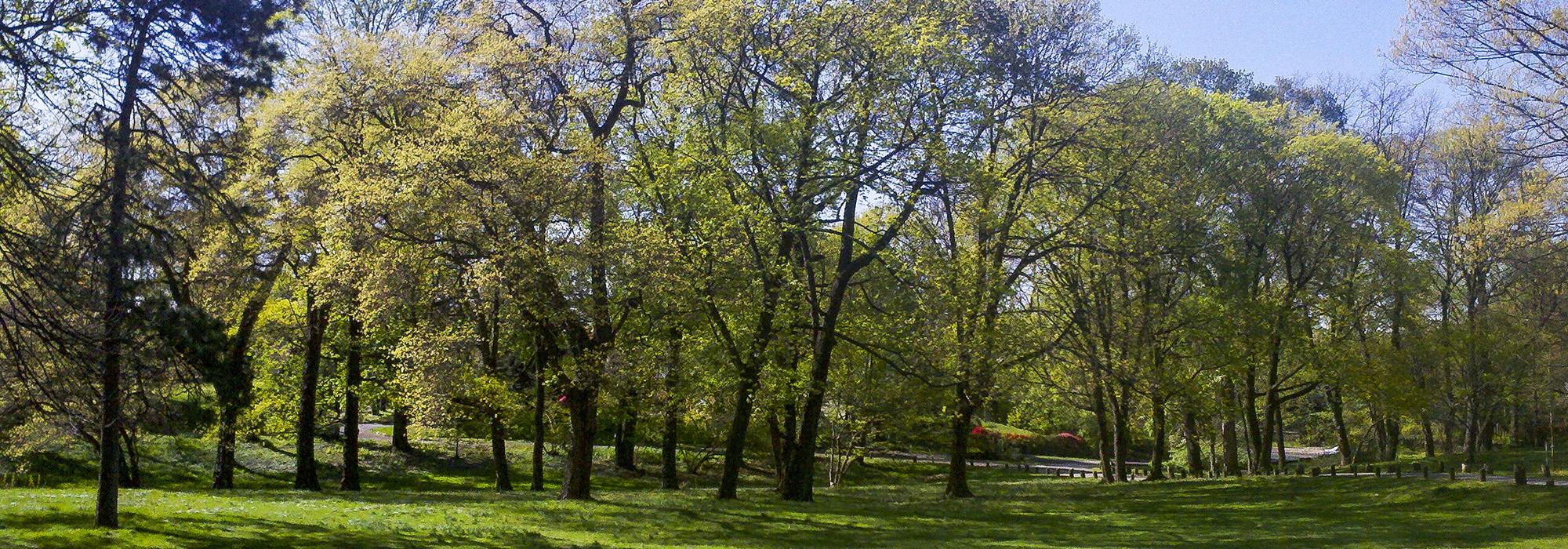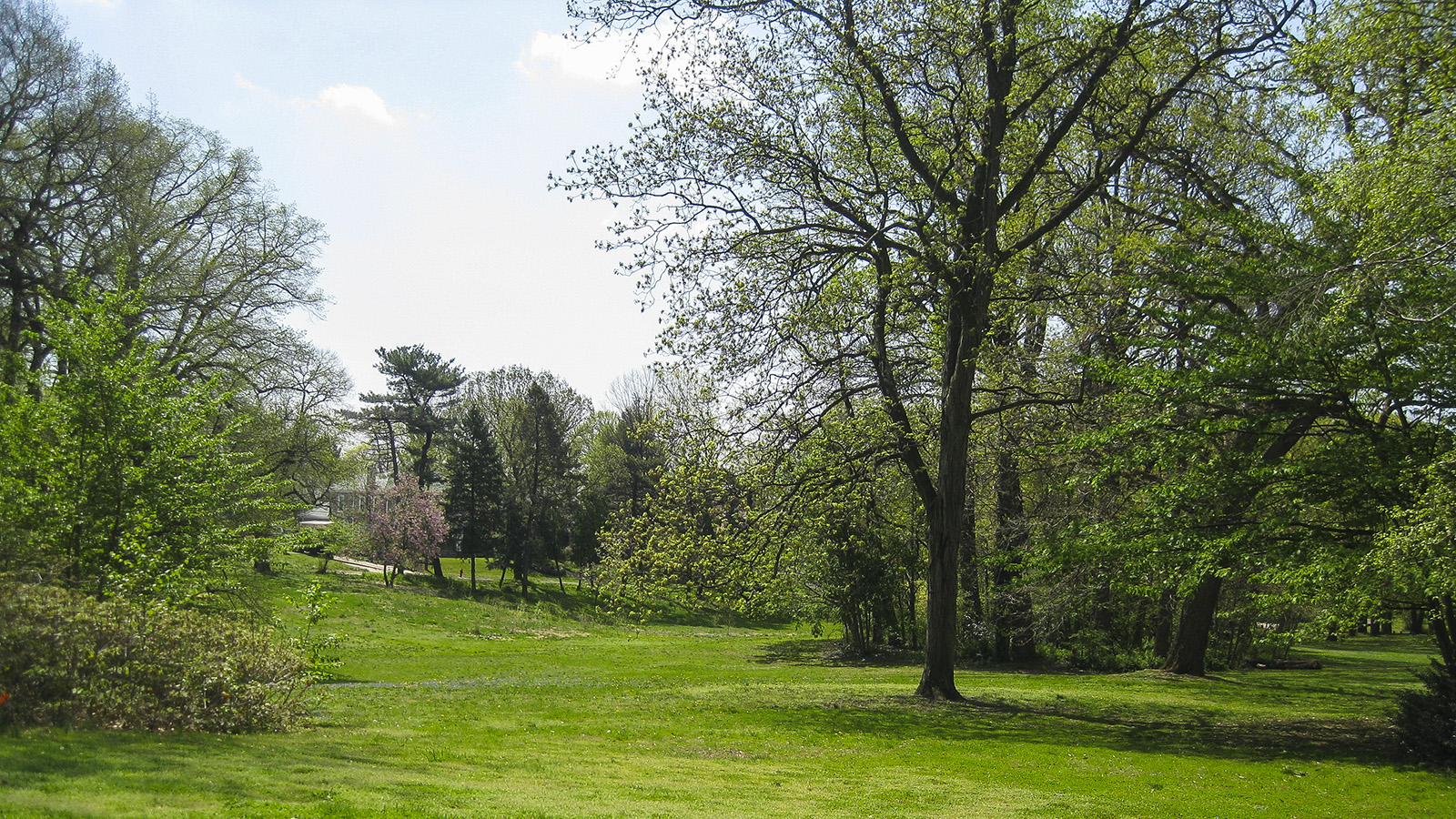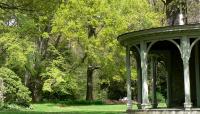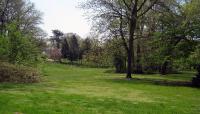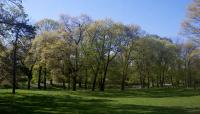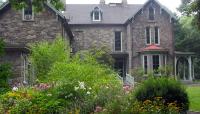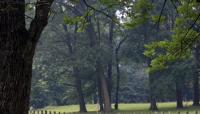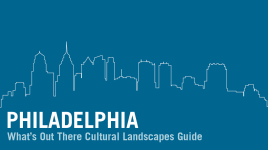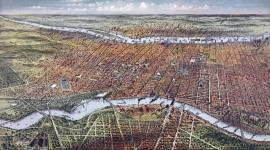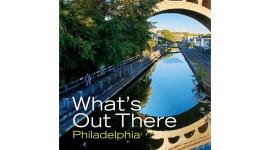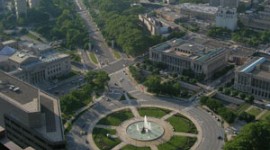Landscape Information
In 1852 Quaker ship owner Henry Cope purchased 40 acres of gently rolling pasture and built a Gothic Revival-style country house. In 1870 landscape gardener William Saunders worked with later members of the Cope family to design an English landscape park, with copses of trees and broad lawns framing picturesque views.
Along with Germantown’s famed nurseries, Cope’s holdings remained a pastoral oasis in a rapidly developing urban context. Meadows, ponds, and woodlands were interspersed with the more than 20 private homes and gardens of six Quaker families. In 1916, the Cope family gave much of the property to the City Parks Association for a public garden. Arthur Cowell and the landscape firm of Harrison, Mertz & Emlen created a master plan in 1919, including a beech hollow and a stone-edged watercourse and ponds created from a spring-fed creek. Their work continued on public park and private family grounds through the next two decades. In the 1930s the Works Progress Administration built stone walls around the perimeter, and in the 1940s Thomas Sears created ambitious but unrealized plans for the arboretum.
Surrounded on three sides by dense urban development, the arboretum's 55 acres reflect planning efforts from 1850 to 1950: a “Secret” Woodland Garden; Haines Field's evenly spaced specimen trees; the Francis R. Cope House; and an urban agricultural village serving a large local food cooperative. Open to the public since 1916, the property was listed in the National Register of Historic Places in 2001 as part of the Awbury Historic District.



